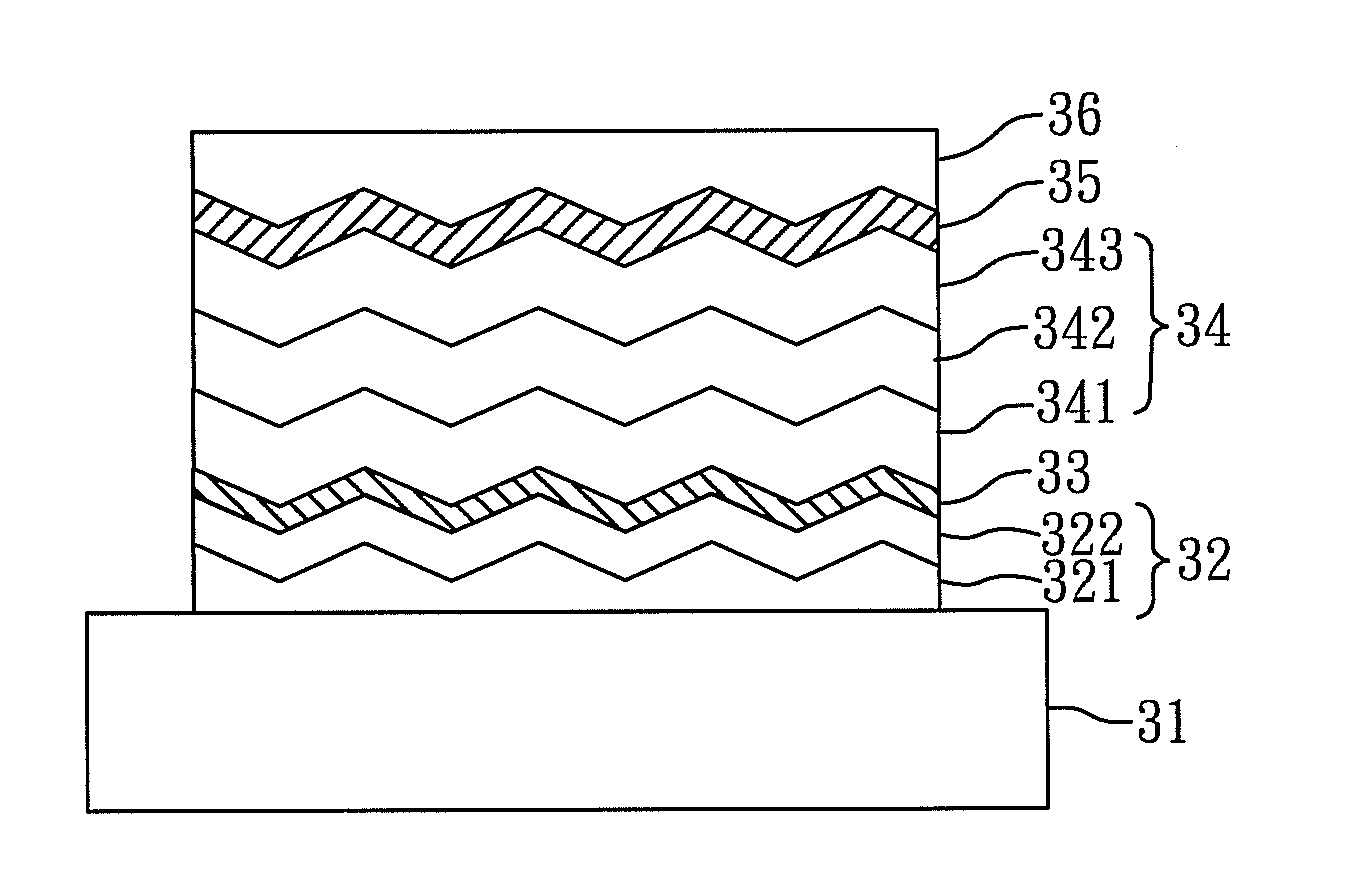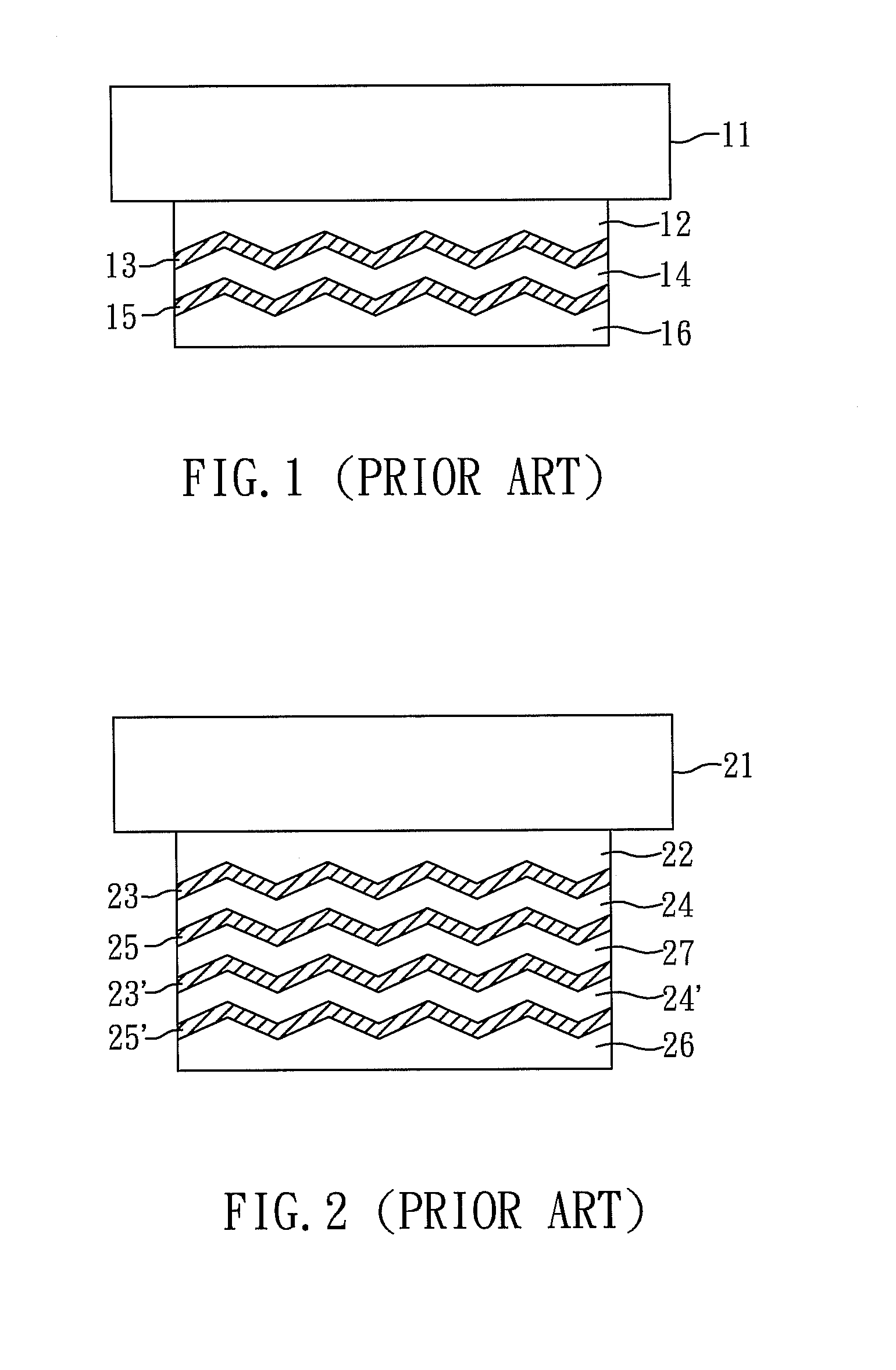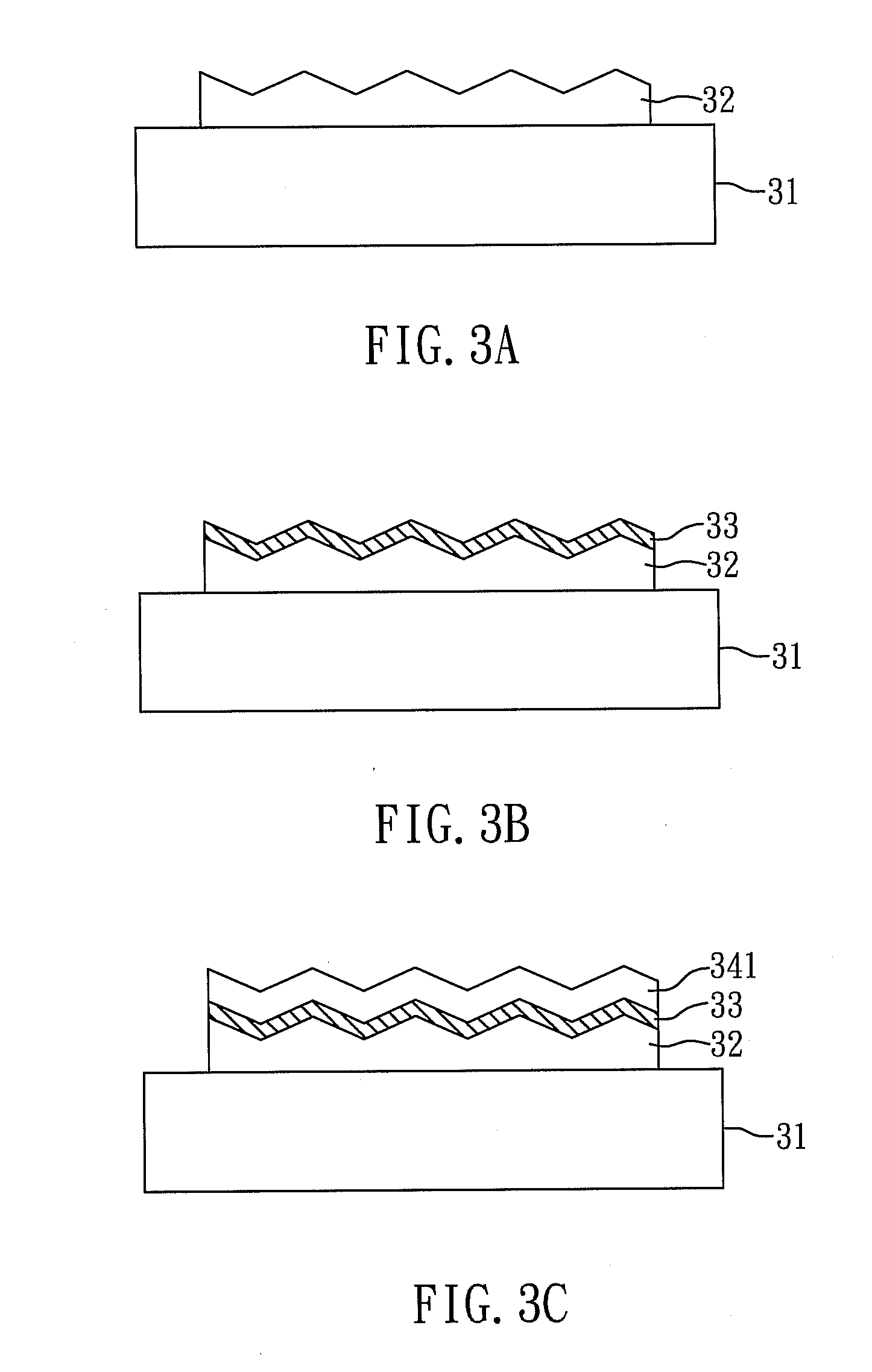Method for manufacturing silicon thin-film solar cells
a technology of solar cells and silicon thin films, applied in the field of manufacturing silicon thin films solar cells, can solve the problems of lower photoelectric conversion efficiency of monocrystalline or polycrystalline silicon solar cells, and the drawback of photodegradation
- Summary
- Abstract
- Description
- Claims
- Application Information
AI Technical Summary
Benefits of technology
Problems solved by technology
Method used
Image
Examples
example 1
[0032]FIGS. 3A to 3G show cross-sectional views for illustrating the method for manufacturing a silicon thin-film solar cell according to the present example.
[0033]As shown in FIG. 3A, a substrate 31 was first provided and a first electrode 32 was formed on the substrate 31. In the present example, a transparent glass substrate was utilized as the substrate 31, and transparent ITO material was coated on the substrate 31 by sputtering to form a first transparent conductive oxide layer as the first electrode 32. Accordingly, incident light can pass through the substrate 31 and the first electrode 32.
[0034]Next, the present example utilized electron cyclotron resonance chemical vapor deposition (ECRCVD) to grow the subsequent silicon thin films.
[0035]As shown in FIG. 3B, a first doped semiconductor layer 33 was formed on the first electrode 32 by ECRCVD. In detail, a p-type amorphous silicon layer was grown as the first doped semiconductor layer 33 in the condition as follows: the subs...
example 2
[0039]FIGS. 4A to 4E show cross-sectional views for illustrating the method for manufacturing a silicon thin-film solar cell according to the present example.
[0040]As shown in FIG. 4A, a substrate 31 was first provided and a first electrode 32 was formed on the substrate 31. In the present example, a stainless steel substrate was utilized as the substrate 31, and Ag (i.e. a metal layer 321) and ZnO (i.e. a first transparent oxide layer 322) were coated on the substrate 31 by sputtering to form the first electrode 32.
[0041]Next, the present example utilized electron cyclotron resonance chemical vapor deposition (ECRCVD) to grow the subsequent silicon thin films.
[0042]As shown in FIG. 4B, a first doped semiconductor layer 33 was formed on the first electrode 32 by ECRCVD. In detail, an n-type amorphous / nano-microcrystalline silicon layer of 300 Å in thickness was grown as the first doped semiconductor layer 33 in the condition as follows: the substrate temperature of about 250° C., th...
example 3
[0046]FIGS. 5A to 5C show cross-sectional views for illustrating the method for manufacturing a silicon thin-film solar cell according to the present example.
[0047]First, a structure as shown in FIG. 5A was fabricated by the process illustrated in FIGS. 3A to 3B.
[0048]Subsequently, as shown in FIG. 5B, the present example utilized ECRCVD and modified the microwave power and the substrate temperature to form an intrinsic layer 34 with bandgaps varied in an approximate V-shaped trend from the side of the p-type amorphous silicon layer on the first doped semiconductor layer 33. In detail, a first amorphous / nanocrystalline silicon layer 341, a second amorphous / nanocrystalline silicon layer 342, a third amorphous / nanocrystalline silicon layer 343 and a fourth amorphous / nanocrystalline silicon layer 344 were formed on the p-type amorphous silicon layer in sequence by modifying the substrate temperature and the microwave power in a constant condition as follows: the deposition pressure of ...
PUM
| Property | Measurement | Unit |
|---|---|---|
| temperature | aaaaa | aaaaa |
| temperature | aaaaa | aaaaa |
| temperature | aaaaa | aaaaa |
Abstract
Description
Claims
Application Information
 Login to View More
Login to View More - R&D
- Intellectual Property
- Life Sciences
- Materials
- Tech Scout
- Unparalleled Data Quality
- Higher Quality Content
- 60% Fewer Hallucinations
Browse by: Latest US Patents, China's latest patents, Technical Efficacy Thesaurus, Application Domain, Technology Topic, Popular Technical Reports.
© 2025 PatSnap. All rights reserved.Legal|Privacy policy|Modern Slavery Act Transparency Statement|Sitemap|About US| Contact US: help@patsnap.com



